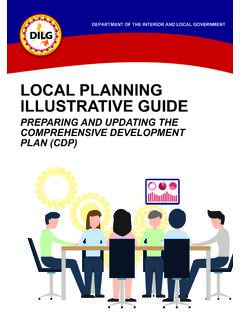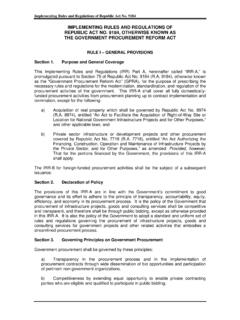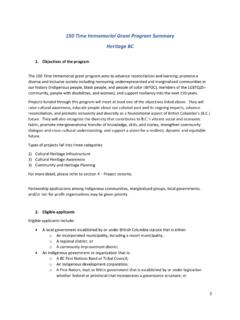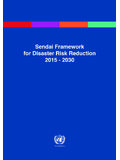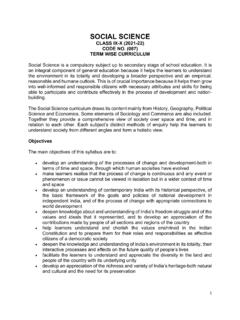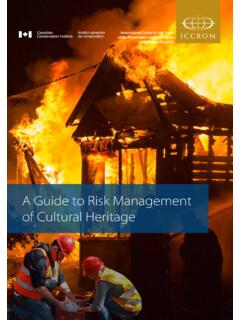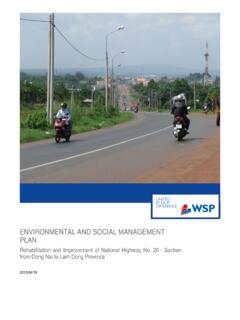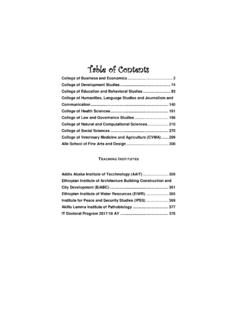Transcription of 2021 SEAL OF GOOD LOCAL GOVERNANCE: PAGKILALA SA …
1 FM-QP-AB-41-02 1 2021 SEAL OF GOOD LOCAL governance : PAGKILALA SA KATAPATAN AT KAHUSAYAN NG PAMAHALAANG LOKAL Reference Number: Date: Rev. No. 1. PREFATORY STATEMENT The Seal of Good LOCAL governance (SGLG) puts primacy to integrity and good performance as pillars of meaningful LOCAL autonomy and development. It is a progressive assessment system that gives distinction to remarkable LOCAL government performance across several areas. As part of the whole-of-government commitment in bringing about meaningful and lasting reforms, the SGLG s predecessor -- the Seal of Good Housekeeping (SGH), was introduced in 2010.
2 It was one of the earliest efforts to initiate results-based performance management in the country. In 2014, it evolved into the SGLG which now includes key governance areas. By incentivizing good performance, the Seal has been instrumental in increasing transparency and accountability, promoting proactive actions to prepare for challenges posed by disasters and influencing LGU behavior that is supportive of both national and international developmental goals, among others. With the enactment of Republic Act No. 11292, SGLG is now an institutionalized award, incentive, honor and recognition-based program that encourages LGUs commitment to continuously progress and improve their performance along various governance areas.
3 The SGLG Act features four components: (i) expansion of assessment criteria from seven to ten; (ii) creation of the Council of Good LOCAL governance ; (iii) provision of the SGLG Incentive Fund; and (iv) development of more responsive capacity building intervention packages, which are likewise gradually integrated in this year s implementation cycle. Republic of the Philippines DEPARTMENT OF THE INTERIOR AND LOCAL GOVERNMENT DILG-NAPOLCOM Center, EDSA corner Quezon Avenue, West Triangle, Quezon City FM-QP-AB-41-02 2 However, with the unprecedented challenges posed by public health crisis experienced in early last year, CY 2020 SGLG assessment activities were suspended. This year, the Seal celebrates the gains of the past years, and reaffirms its foundational goal of inculcating a culture of performance among LGUs nationwide.
4 It continues to be a significant platform where both national and LOCAL level work together in bringing about the vision of inclusive growth and development, through tapat at mahusay na pamahalaang lokal! 2. SCOPE/COVERAGE This policy shall cover: Eighty-one (81) provinces, 145 cities and 1,489 municipalities which shall be subjected to the SGLG assessment; All DILG Regional and Field Offices (DILG-RO and FO) which are primarily involved in regional implementation, together with members of the Council of Good LOCAL governance ( the Council ), non-government organizations (NGOs), civil society organizations (CSOs), LOCAL research institutes (LRIs) and/or other national government agencies (NGAs) partners; Bureau of LOCAL Government Supervision LOCAL governance Performance Management Division (BLGS-LGPMD), as overall lead in the implementation of the program.
5 And Concerned DILG-Central Office (DILG-CO) Bureaus and Services which shall likewise provide the necessary technical, administrative and/ or logistical support. 3. POLICY CONTENT AND GUIDELINES Assessment Criteria In accordance with the SGLG Act, assessment criteria are expanded from seven (7) to ten (10) governance areas aimed for conditions where LGUs: FM-QP-AB-41-02 3 Financial Administration and Sustainability: Uphold the practice of fiscal discipline and sustainability, and transparency and accountability in the use of public funds; Disaster preparedness : Prevent and prepare for disasters, whether natural or human-induced, in order to strengthen their resilience; Social Protection and Sensitivity: Demonstrate responsiveness to the needs of, and facilitate meaningful engagement with the vulnerable and marginalized sectors of society.
6 Health Compliance and Responsiveness: Set-up, implement, and sustain health policies and programs that would strengthen and promote the well-being, healthy lifestyle, and safety of the public, while ensuring that all individuals, especially the vulnerable, have fair opportunities for better health without causing financial hardship through the organization of an integrated healthcare delivery system; Sustainable Education: Implement education reforms and programs to support the vision of quality education for all; Business-Friendliness and Competitiveness: Enable pro-competitive policies and interventions, and facilitate ease of doing business, in accordance with the Ease of Doing Business and Efficient Government Service Delivery Act of 2018 (RA 11032); Safety, Peace and Order: Protect constituents from threats to life and damage to property; Environmental Management: Safeguard and preserve the integrity of the environment through adaptive social responsibility; Tourism, heritage Development, Culture and Arts: Foster the value of sustainable tourism, and nurture culture and heritage ; and Youth Development: Stimulate meaningful participation of youth in LOCAL governance and nation-building.
7 FM-QP-AB-41-02 4 The SGLG maintains the All-In principle where an LGU has to pass all assessment areas. In addition, for a province to qualify, ten percent (10%) of its component cities and municipalities must also be passers. Consistent with Section 9 of the law, it shall be the burden of an LGU to show that it qualifies for the Seal. Assessment results shall be subjected to further deliberation to ensure alignment to the objectives and principles of the SGLG. Assessment Prerequisites: Tools, Mechanisms, Structures and Support from Partners Assessment Tools. Prescribed forms and supporting guidelines shall be provided by the BLGS to facilitate data capture, certification and documentation. A separate issuance for these shall be circulated to all Regional Offices.
8 Operational Platforms LOCAL governance Performance Management System (LGPMS) shall be the main platform of the SGLG, particularly for online data entry and web reports. LGPMS-SGLG Google Drive shall serve as the storage facility of all documents and databases relative to LGU assessment and monitoring of activities. Use of email and social media shall be maintained to expedite coordination requirements. Structures and Compositions The Council of Good LOCAL governance ( the Council ), established by Section 4 of RA 11292, is chaired by the DILG and composed of representatives from the identified nine (9) FM-QP-AB-41-02 5 national government agencies and a representative from the basic sectors nominated by the National Anti-Poverty Commission.
9 The Council shall act as a policy-making and advisory entity to ensure proper implementation, primarily on: (a) promulgating performance standards of the criteria; and (b) deliberating final assessment results to determine acceptability of prior to approval of the Council Chairperson, the SILG. The Regional Assessment Team (RAT), to be organized by the DILG-Regional Office, is headed by the Assistant Regional Director and consists of at least a Cluster Head ( in the case of component cities and municipalities), or a Provincial/City Director (in the case of provinces and HUCs) and a representative from a CSO or LRI. DILG-ROs must ensure that no RAT member shall assess his/her own LGU or cluster assignment. DILG-ROs must ensure that no RAT member shall assess his/her own LGU or cluster assignment.
10 They are tasked to conduct documentary review, and/or interview, as appropriate. Onsite inspection may still be used as another means of verification; provided that prescribed health standards are observed. In case onsite visit is not feasible due to travel restrictions or other pandemic-related circumstance, RAT may opt to use online platform as an alternative. The DILG-ROs may also engage representatives from Council member counterparts or private sector. Moreover, the DRR-CCA Regional or Provincial Focal Persons are to be tapped as resource person or team member to confirm adequacy of information and corresponding evidence for parameters under Disaster preparedness . Recommendations of the teams shall be the main reference in shortlisting potentially qualified LGUs of each region.

